You walk into a local restaurant in Okinawa, and on the menu are its bestsellers: Okinawa soba, a dish that feels unmistakably Japanese; chanpuru, a stir-fry of bitter melon, egg, and tofu – also a common South China or Southeast Asia dish; and then, oddly, a Tex-Mex style taco rice.
To the uninitiated, it might come across as a cuisine with no clear identity, but this culinary mash-up has deep roots.
Okinawa was once the independent Ryukyu Kingdom, a prominent trade partner with imperial China and Southeast Asia for centuries, before it was annexed by Japan, then later occupied by American forces after WWII. Each era left its mark in the language, the culture, and especially the food.
Today, Okinawa is Japan’s most popular domestic holiday spot, and an increasing number of travelers from East Asia and Southeast Asia are making their way there too, thanks to more direct flights (Jetstar flies direct from Singapore three times a week).
Part of the allure? Subtropical weather, some of the best dive spots in the world, pristine, uncrowded beaches next to five-star resorts – no wonder it’s called the “Hawaii of Japan” by some.
But if you ask us – start with the food. Because not only is it a delicious, underrated side of Japanese cuisine with tropical twists and turns, it’s also an easy way to get acquainted with the island’s layered history and culture. So if you’re planning a trip, let this culinary guide be your way in.
NAHA CITY RESTAURANTS FOR TRADITIONAL OKINAWAN CUISINE
 An exhibit at Urasoe Art Museum showcases traditional Ryukyu-era meals served in ornate lacquer trays. (Photo: Lam Shushan)
An exhibit at Urasoe Art Museum showcases traditional Ryukyu-era meals served in ornate lacquer trays. (Photo: Lam Shushan)
ROYAL COURT CUISINE
Back in the days of the Ryukyu Kingdom, Okinawa was a tributary state of Ming China, and food played a diplomatic role. Royal chefs were sent to China to train, returning with refined dishes meant to impress visiting envoys.
Served in elegant lacquerware, these became the foundation of Ryukyu court cuisine. After the kingdom was abolished by Imperial Japan in the late 1800s, these once-exclusive dishes gradually made their way to the masses.
Today, you can still taste that royal heritage in Naha city. Ryukyu Cuisine Mie stands out for its traditional, pared-back style, while Nuchigafu in the quaint pottery neighbourhood of Tsuboya and Omoro Dun-chi just outside the center offer a more homely take in charming, old-style settings.
IZAKAYAS
For a more casual take on Okinawan food, hit up a local izakaya. The lively atmosphere in these eateries are perfect for sharing small plates over drinks.
One staple to try is goya chanpuru – a bitter melon stir-fry with egg and tofu. Variations may include ingredients like okra or even Spam, a pantry staple dating back to the American postwar era. The word chanpuru means “something mixed,” and is said to originate from the Malay word “campur” – a nod to the multicultural influence on Okinawa’s cuisine.
 Most dishes at Shima Buta-ya are served steamed in bamboo trays (Photos: Chrystal Koh)
Most dishes at Shima Buta-ya are served steamed in bamboo trays (Photos: Chrystal Koh)
If you spot Agu pork on the menu, order it. This Okinawan native breed is prized for its marbled richness, often dubbed the wagyu of pork. For a dedicated experience, head to Shima Buta-ya, a restaurant that specialises in all things Agu. Not to be missed are the black sesame pork and side dishes like peanut tofu and fried yam.
Tip: These places fill up fast – go early or make a reservation to avoid the queue.
OKINAWA SOBA
Okinawa soba is to the islanders what ramen is to the mainland Japanese – an everyday staple with countless variations, but the fun is in trying them all. Typically, expect thick, chewy wheat noodles in a clear, light broth, topped with sweet-savoury pork belly, fishcake and ginger slices.
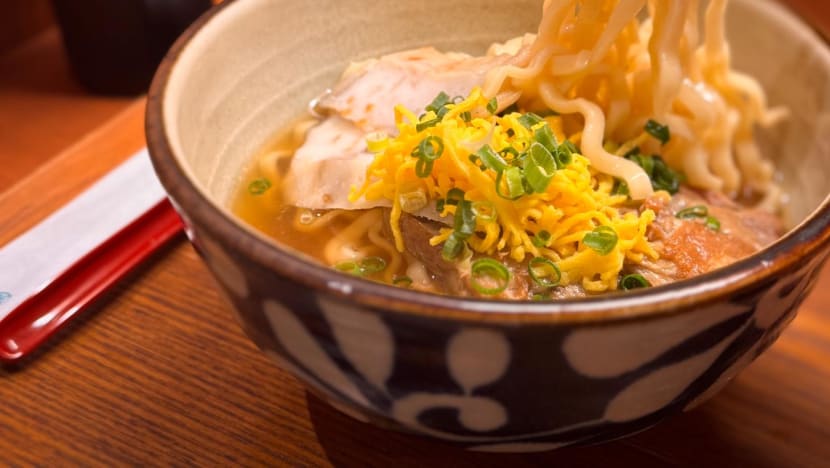 Soba is enjoyed throughout the day – from hearty breakfasts for office workers to late-night suppers. Susuriba Okinawa Soba caters to both. (Photo: Lam Shushan)
Soba is enjoyed throughout the day – from hearty breakfasts for office workers to late-night suppers. Susuriba Okinawa Soba caters to both. (Photo: Lam Shushan)
In Naha, try the Insta-famous Eibun (expect to queue), or go hyper-local at Susuriba Okinawa Soba, where ordering is done vending-machine style – no-frills and tucked in a nightlife-heavy neighbourhood of Matsuyama.
 (Photo: Lam Shushan)
(Photo: Lam Shushan)
For something different, head to Restaurant Arinkaya in Minatogawa Stateside Town – a repurposed American military housing area now home to indie boutiques and cafes. The chef, originally from Yonaguni Island, brings a southern twist to the classic bowl.
MAKISHI PUBLIC MARKET
Located along the main Kokusaidori Street, this 74-year-old establishment is a great sampling ground for fresh Okinawan produce, from tropical fruit to fresh seafood which can be purchased and prepared on the spot at one of the restaurants on the second level.
You’ll also find stalls selling traditional fare like fishcakes – a delicacy enjoyed during Shimi, Okinawa’s tomb-sweeping festival. Much like Qing Ming in Chinese culture, families gather at ancestral graves to offer food and share a meal together.
 Nansei Donuts in Naha will relocate in 2025 – check their Instagram for the latest updates. (Photo: Lam Shushan)
Nansei Donuts in Naha will relocate in 2025 – check their Instagram for the latest updates. (Photo: Lam Shushan)
Keep an eye out too for traditional snacks like Okinawan donuts – a treat with roots in South China. Nansei Donuts (previously located opposite the market, with plans to relocate as of April 2025) is known for frying them fresh to order, offering contemporary flavours like lemon, mugwort, and brown sugar.
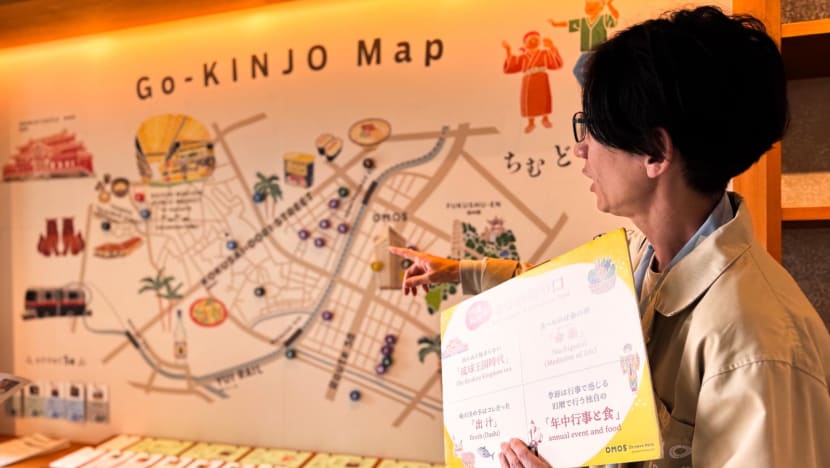 OMO hotels are known for curating culinary experiences that spotlight lesser-known, local neighbourhoods. (Photo: Lam Shushan)
OMO hotels are known for curating culinary experiences that spotlight lesser-known, local neighbourhoods. (Photo: Lam Shushan)
Tip: For a food-focused stay in Naha, consider OMO5 Okinawa Naha, located in the heart of Matsuyama, Naha’s buzzing nightlife and dining district. In the lobby, you’ll find an interactive map of top local eats curated by insiders – or enjoy Okinawan dishes at the in-house cafe, which serves dishes from beloved neighbourhood restaurants. The hotel also offers daily Awamori (a local rice wine) tastings and English-language market tours for a deeper dive into local food culture.
THE POSTWAR ERA: OKINAWA’S DINER AND DRIVE-IN CULTURE
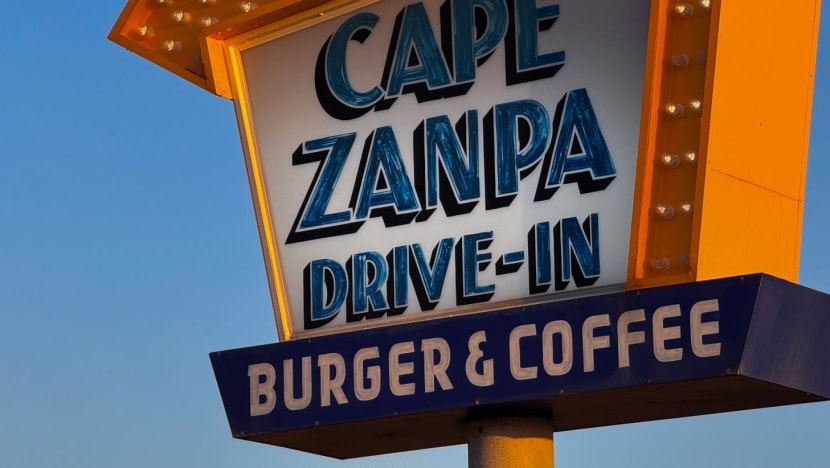 Cape Zanpa Drive-In diner is the perfect spot to enjoy the sunset with a freshly made burger in hand. (Photo: Lam Shushan)
Cape Zanpa Drive-In diner is the perfect spot to enjoy the sunset with a freshly made burger in hand. (Photo: Lam Shushan)
After Japan’s surrender in WWII, Okinawa came under US administration until 1972. During this time, the island became home to one of the most strategic American military bases in the Asia-Pacific – and with it, a wave of American cultural influence that still lingers today. Nowhere is this more visible than in Okinawa’s love for American-style diners.
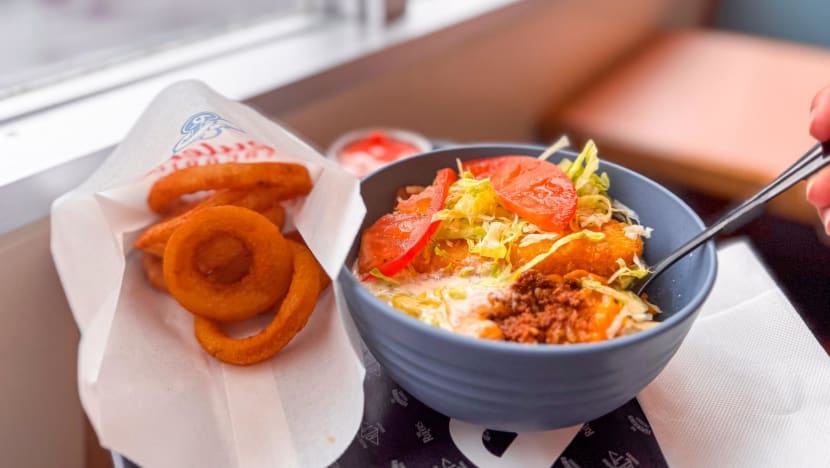 At Ruler’s Taco Rice diner. (Photo: Lam Shushan)
At Ruler’s Taco Rice diner. (Photo: Lam Shushan)
In Chatan, you’ll find Ruler’s Taco Rice, a diner dedicated to the dish that defines Okinawa’s East-meets-West culinary identity. Taco rice – ground beef and salsa over fluffy Japanese rice, topped with shredded lettuce, cheese, and other fixings – was born out of the island’s military presence but is now beloved by locals. Be sure to order a side of their onion rings.
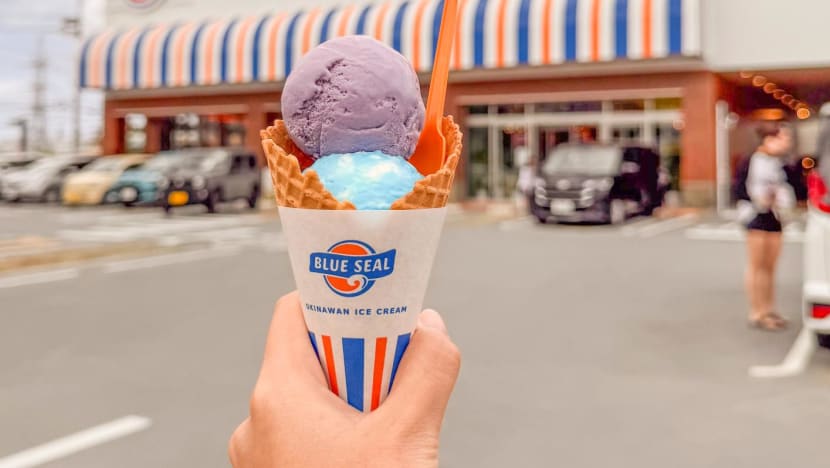 Blue Seal Ice Cream began as the sole dairy supplier for the US military in Okinawa. (Photo: Lam Shushan)
Blue Seal Ice Cream began as the sole dairy supplier for the US military in Okinawa. (Photo: Lam Shushan)
Blue Seal Ice Cream, a local institution, began in 1948 as a dairy supplier to the US military. While you’ll find outlets all over Okinawa, the newly-renovated Makiminato branch is worth a visit. Styled like a 1950s diner straight out of Grease, it features a small exhibit on the brand’s history and the full lineup of flavours. This writer’s top picks: Strawberry cheesecake and Okinawan salt cookies.
If you're road-tripping up north, swing by Sea Side Drive-In – Okinawa’s oldest drive-in, opened in 1967 by a refrigerator mechanic who once worked with the American military and was inspired by the diner-style restaurants on base. This roadside institution is loved by locals for its order-at-the-window charm and hearty fare: Think oxtail stew, cream of mushroom soup, and a surprisingly great club sandwich. The vibe is reminiscent of a Hainanese-Western cafe one would find in Singapore.
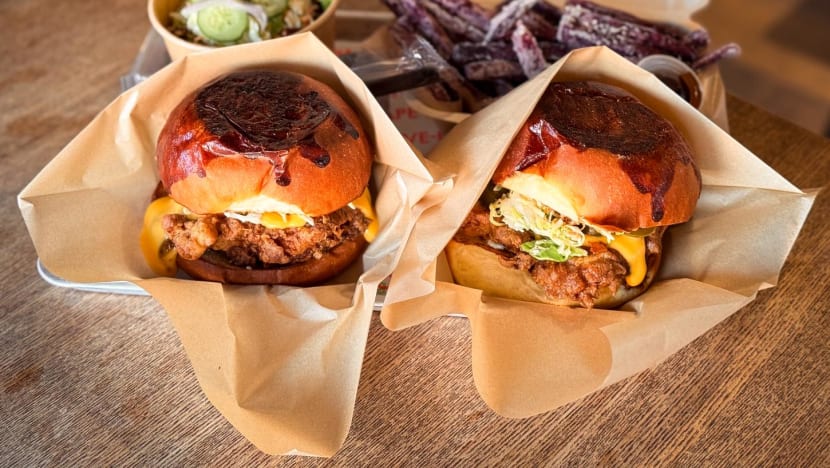 Crispy chicken burgers from Cape Zanpa Drive-In. (Photo: Lam Shushan)
Crispy chicken burgers from Cape Zanpa Drive-In. (Photo: Lam Shushan)
Another worthwhile stop if you’re heading north toward Cape Zanpa is Cape Zanpa Drive-In, known for its crispy chicken burgers. Add a side of homemade slaw and freshly fried sweet potato chips. This humble diner is also the perfect spot to kick back and enjoy the sunset after a day of road tripping and sight-seeing.
LONGEVITY FOOD AT OGIMI VILLAGE
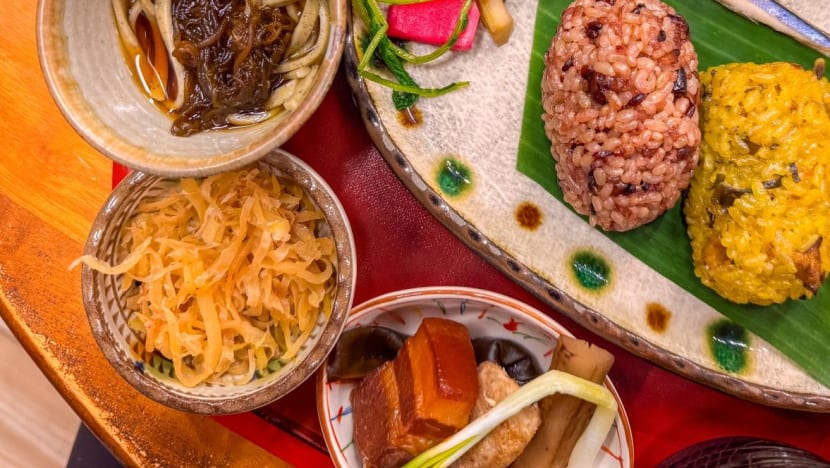 Emi No Mise: Ogimi’s food culture draws from ancestral wisdom, using seasonal local ingredients in recipes passed down through generations. (Photo: Lam Shushan)
Emi No Mise: Ogimi’s food culture draws from ancestral wisdom, using seasonal local ingredients in recipes passed down through generations. (Photo: Lam Shushan)
Okinawa is one of the world’s five Blue Zones – regions with the highest concentration of centenarians. One village in particular stands out: Ogimi, in the island’s north, where it’s not uncommon to see old folks tending to their vegetable gardens with quiet vitality. Many elderly folk are self-sufficient and aging healthily.
Ogimi is also famed for another powerhouse of longevity – Shikuwasa, a local citrus rich in Nobiletin, a compound known for its anti-inflammatory and neuroprotective properties, particularly in combating Alzheimer’s.
Two stops not to miss:
EMI NO MISE
For lunch, head to Emi no Mise, a humble eatery where you’re served a longevity meal in the owner’s own home. Expect a nourishing spread of homegrown, home-pickled, mostly plant-based dishes — all prepared with care and tradition. Seating is very limited, so reservations are essential.
SHIKUWASA PARK
While you will find Shikuwasa juice all over Okinawa, here you’ll get to taste it right at the source. The park offers English-language tours that take you through the production process and highlight the fruit’s health benefits. Don’t leave without stocking up on some Shikuwasa produce, with everything from cakes, sweets, and juice concentrates.
AWAMORI: THE LIQUOR THAT PREDATES SAKE AND SOCHU
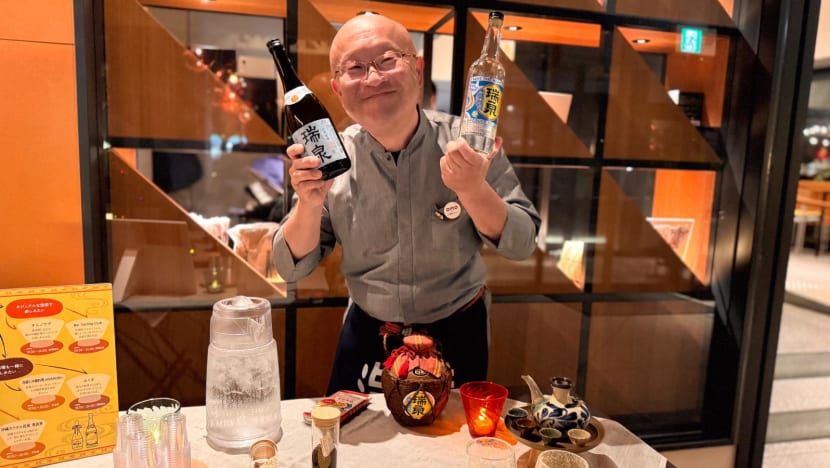 At OMO5 Naha Okinawa, staff conduct awamori appreciation sessions nightly. (Photo: Lam Shushan)
At OMO5 Naha Okinawa, staff conduct awamori appreciation sessions nightly. (Photo: Lam Shushan)
Long before sake or shochu, there was awamori – Japan’s oldest distilled rice liquor, with roots tracing back to Okinawa’s trade with Thailand and China in the 15th century. The technique eventually made its way to mainland Japan, evolving into the sake and shochu we know today. Yet despite its heritage, awamori remains under the radar, often dismissed as an "old man’s drink" by younger generations.
Now, a new wave of bartenders and distillers is breathing fresh life into this forgotten spirit.
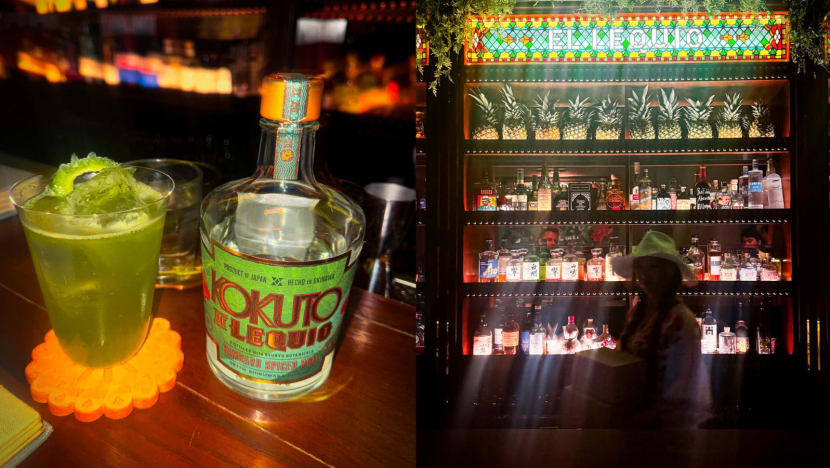 El Leqiuo is the only mixology bar in Naha and it's earned a spot on Asia’s 50 Best Bars extended list in 2023. (Photo: Lam Shushan)
El Leqiuo is the only mixology bar in Naha and it's earned a spot on Asia’s 50 Best Bars extended list in 2023. (Photo: Lam Shushan)
In Naha, make a beeline for El Lequio – the city’s only mixology bar and a proud entry on Asia’s 50 Best Bars extended list (2023). Portuguese for “the Ryukyu,” El Lequio champions Awamori through inventive cocktails that spotlight local ingredients – think bitter gourd-infused spirits and house-made awamori blends.
Behind the bar is Satoshi Sugiura, a visionary bartender who partners with local farmers and producers to craft his own spirits. His efforts have taken Okinawan liquor to new heights – including guest shifts around some of Asia’s top bars.








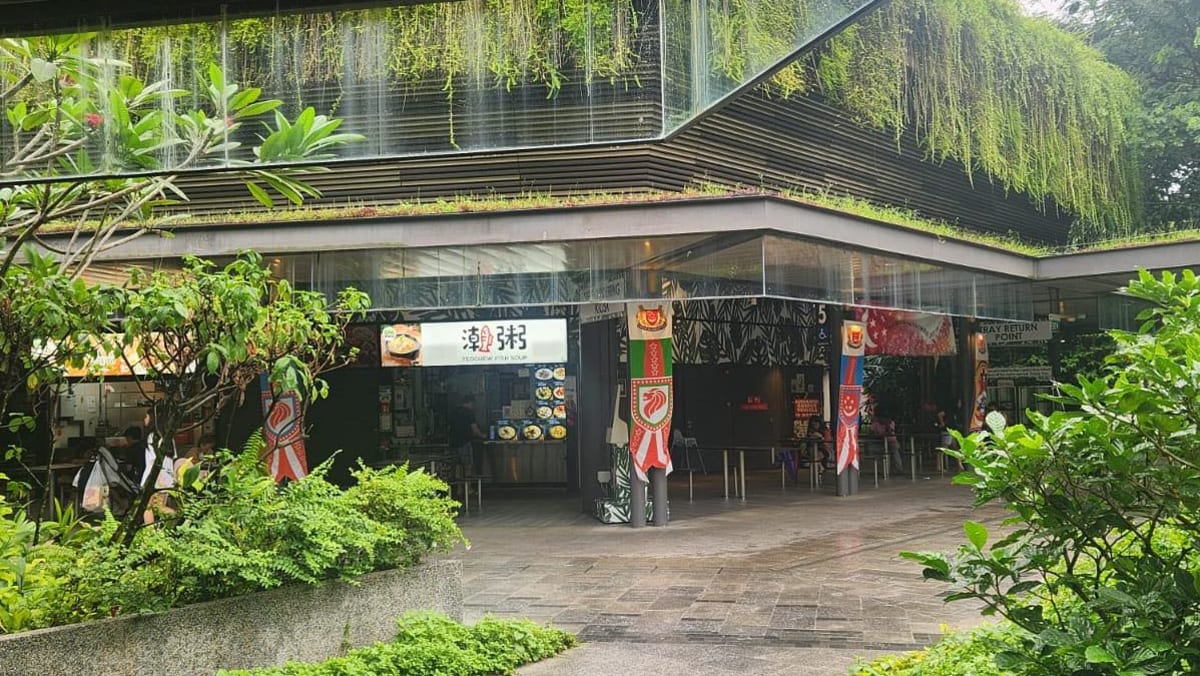


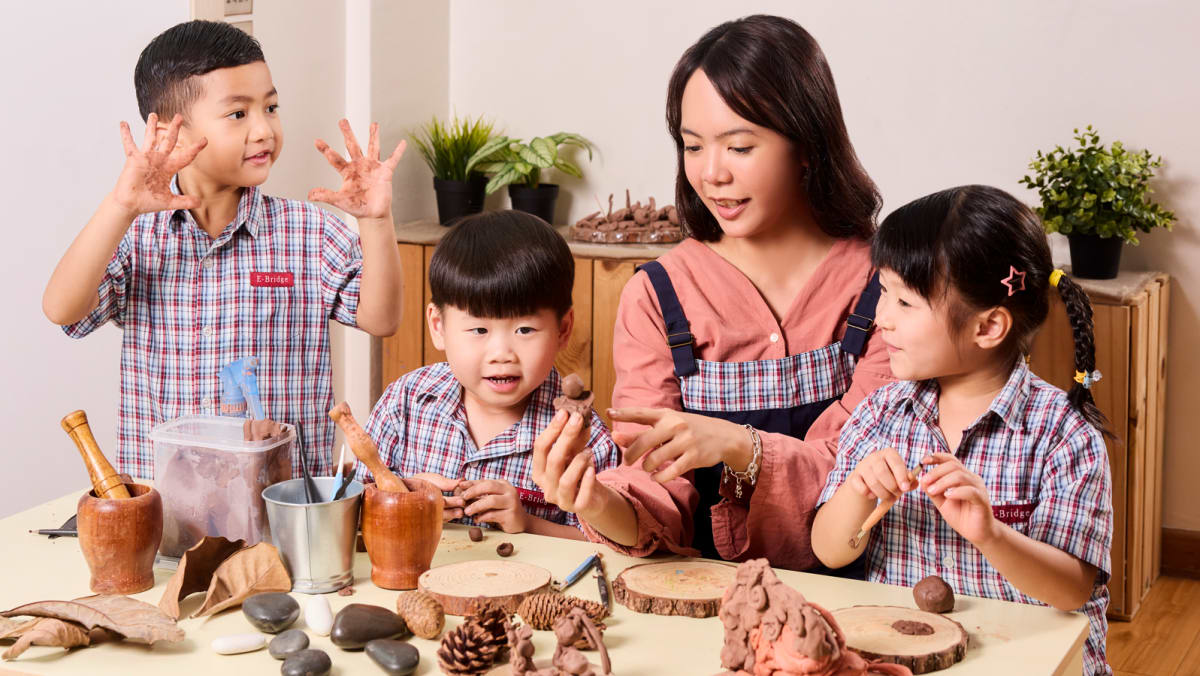




















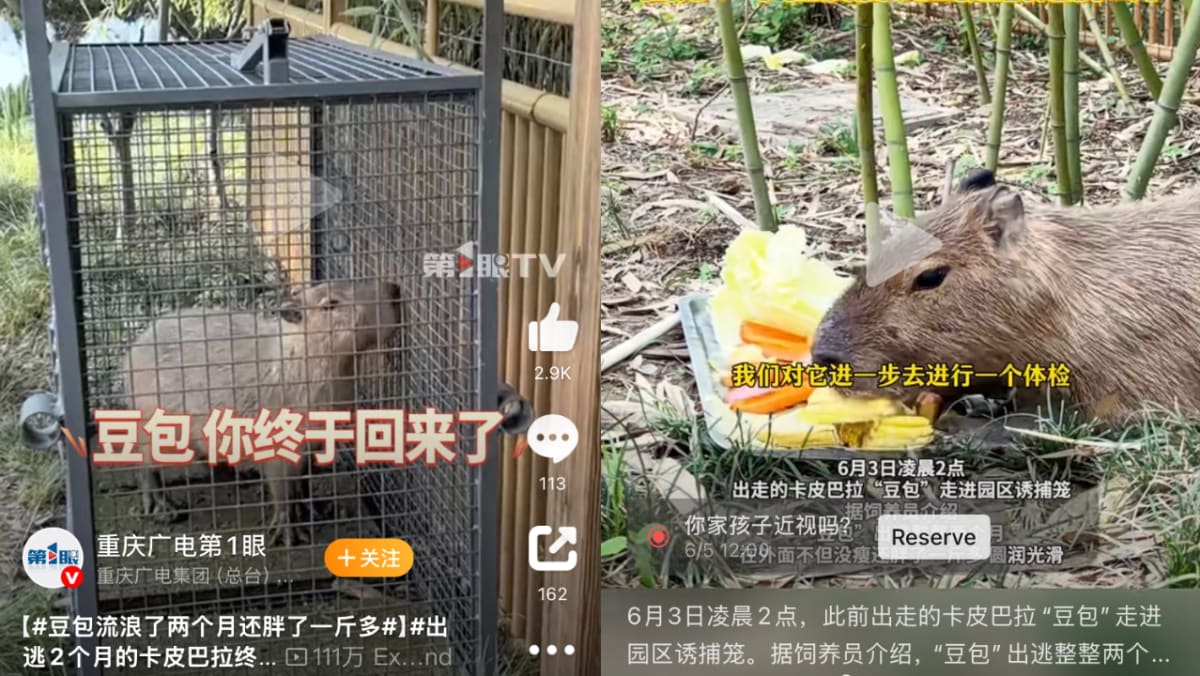

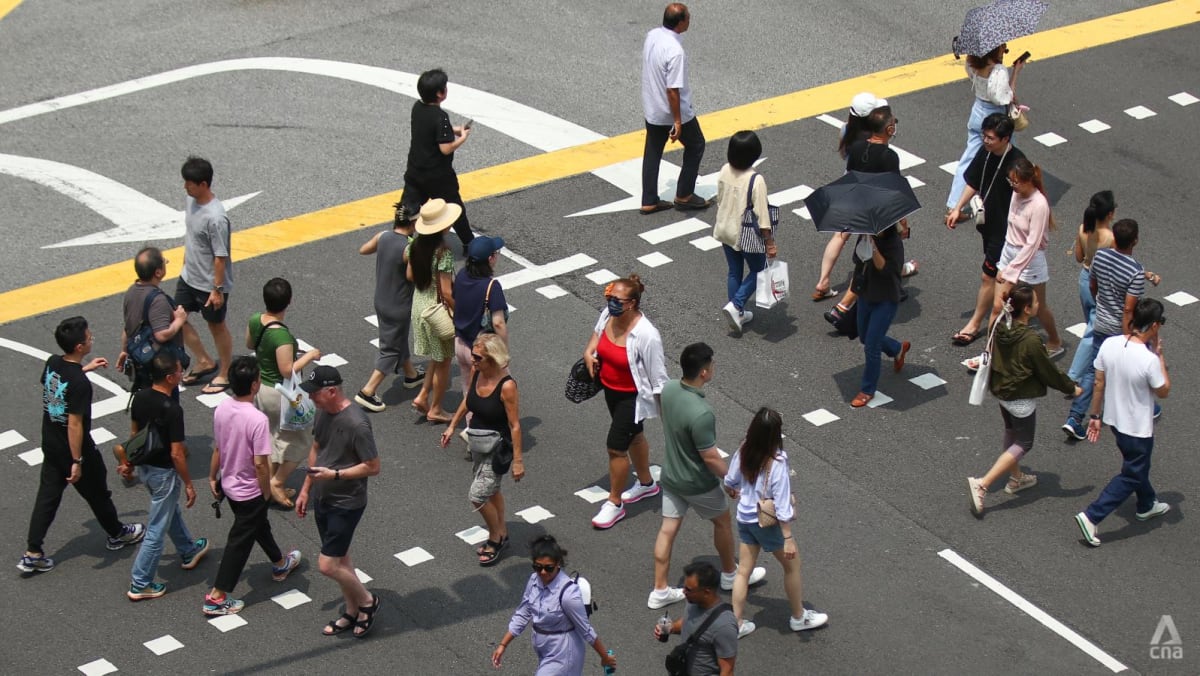










.png?itok=erLSagvf)




